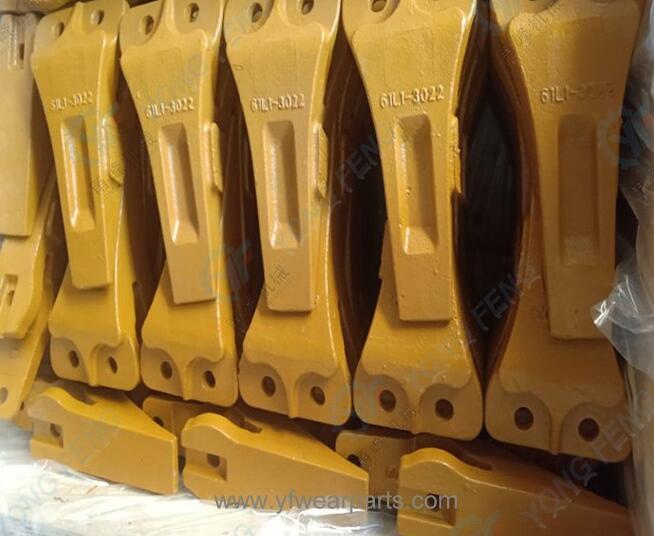Although bucket teeth are a small part of earthmoving machinery and are relatively inexpensive, strength and durability are undoubtedly factors that must be considered when selecting them. Among the various types of bucket teeth, both forged and cast bucket teeth are usually wear-resistant. However, forged bucket teeth have higher wear resistance and hardness, and their service life is two times longer than cast bucket teeth.
The manufacturing process begins by pouring molten metal into a mold cavity with a repeating pattern of teeth. After cooling, the teeth are removed from the mold.
The casting process may cause air to be trapped in the metal pouring process and may create excess metal when the two parts of the mold are joined together. The mechanical properties and wear resistance of cast teeth are not as good as those of forged teeth.

Forged bucket teeth are made from billets by an innovative forging process. A forging press is used to generate extreme pressure and high temperature extrusion to optimize the grain flow of the steel to provide enhanced mechanical properties. Forged bucket teeth offer high impact strength, better wear resistance and longer service life.
✴Bucket wear protection, which protects the bucket edge from dust and stone impacts .
✴It can provide the operator with better edge sharpness and penetration to increase bucket loading capacity .
✴Excellent impact absorption when excavating rock beds or hard clay soils.
✱When excavating, the outermost bucket teeth on both sides lose 30% more wear than the innermost layer. After a period of operation, it is advisable to switch the position of the innermost and outermost bucket teeth.
✱The operator should pay attention to the digging angle when operating the excavator, which should be perpendicular to the surface of the object to prevent the bucket teeth from breaking due to excessive tilting.
✱The excavator arm should not swing in the horizontal direction when the resistance is high, otherwise the horizontal force is too large to easily cause the bucket teeth and seat to break.
✱The wear condition of bucket tooth seat is also a key issue affecting the service life of excavator bucket teeth. It is better to replace the bucket tooth seat when the wear loss reaches 10%, because the large gap generated by wear will change the force point between the bucket tooth seat and the bucket tooth, which may cause the bucket tooth to break.
✱Operation methods also play a very important role in improving the utilization of bucket teeth. The excavator operator should pay special attention to the coordination of the operation to avoid damage caused by the bucket hitting the rocks.